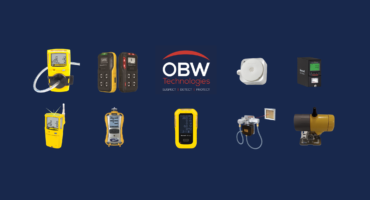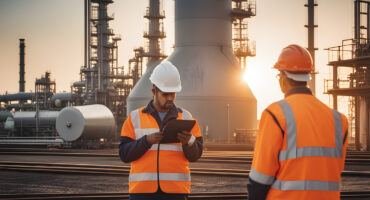In today’s dynamic work environments, the concept of lone working has become increasingly prevalent. Lone working spans across various sectors, from utility workers in remote locations to healthcare professionals making home visits.
While this autonomy can offer flexibility and efficiency, it also introduces unique safety challenges. Understanding these challenges is crucial for ensuring that lone workers are protected, thereby enhancing their job performance and personal safety.
What Is Lone Working?
Lone working refers to any job or task performed by an individual where there is no direct supervision or immediate assistance from colleagues. This type of work can occur in various settings, both indoors and outdoors, and across numerous industries:
- Utilities and Maintenance: Workers repairing lines or conducting inspections in remote or hazardous areas.
- Healthcare: Nurses, doctors, or therapists visiting patients in their homes or in isolated facilities.
- Security: Guards working night shifts at locations where they are the only staff present.
- Transport: Drivers, particularly those on long-haul routes or in areas with limited communication.
The essence of lone working is the absence of immediate physical support, which introduces a spectrum of risks. These risks can range from physical hazards like falls or accidents to more complex issues such as medical emergencies without prompt aid, or even personal security threats in isolated or high-risk environments.
Lone workers must often rely on their own judgement and resources to manage these risks. This reliance underscores the importance of equipping them with the knowledge, training, and technology to handle potential dangers effectively. The challenge for employers and regulators is to balance the autonomy and efficiency of lone working with stringent safety measures to protect these individuals from harm.
Lone Working Policy in Ireland
In Ireland, the safety of lone workers is governed by a robust framework designed to ensure their well-being. The primary legislation is the Safety, Health and Welfare at Work Act 2005, which mandates employers to manage and conduct work activities in such a way as to ensure the safety, health, and welfare of all employees, including those who work alone.
Key Components of a Lone Working Policy in Ireland:
- Risk Assessment: Employers are legally required to assess risks specifically related to lone working, identifying hazards and evaluating the risks associated with them. This includes considering the work environment, the tasks involved, and the individual’s capability to perform those tasks safely alone.
- Policy Development: Based on the risk assessment, a comprehensive lone working policy should be developed. This policy outlines:
- The responsibilities of both employer and employee.
- Procedures for emergency situations, including contact protocols.
- Training requirements for lone workers on how to manage risks and use safety equipment.
- Regular review and updating of the policy to adapt to new risks or changes in work practices.
- Communication and Supervision: There must be effective means of communication for lone workers to get help if needed. This might involve scheduled check-ins, use of mobile devices, or lone worker devices with panic buttons. Supervision might not be direct but can be managed through periodic visits or electronic monitoring systems.
- Training: Workers need specific training to handle the unique challenges of working alone. This includes first aid, use of safety devices, risk identification, and emergency procedures.
- Health and Safety Representation: Lone workers should have access to health and safety consultations, even if they work remotely or irregular hours.
- Compliance Monitoring: Employers should monitor compliance with the lone working policy, ensuring that the measures put in place are effective and that workers adhere to safety practices.
At OBW Technologies, as a leader in this field, we help companies comply with these requirements and also enhance safety measures through innovative solutions. Our commitment to lone worker safety aligns with Irish regulations, providing both policy guidance and practical tools like the G7C device to ensure lone workers are not just meeting the legal minimum but are genuinely protected in their work environment.
Risk Assessment for Lone Workers
A thorough risk assessment is pivotal for ensuring the safety of lone workers. This process involves identifying potential hazards, evaluating the risks they pose, and determining appropriate control measures to mitigate these risks. Here’s how this can be approached:
Importance of Risk Assessment:
- Preventive Measure: It helps in anticipating and preventing accidents or emergencies before they occur.
- Legal Compliance: Under Irish law, risk assessment is not just recommended but required to comply with health and safety legislation.
- Tailored Safety: It allows for the customization of safety measures to fit the specific needs of each lone worker’s job, environment, and personal capabilities.
Steps in Conducting a Risk Assessment for Lone Workers:
- Identify Hazards:
- Physical Hazards: Falls, machinery accidents, exposure to harmful substances.
- Health Hazards: Isolation leading to stress, lack of immediate medical response in emergencies.
- Security Hazards: Violence, theft, or intimidation when working alone.
- Evaluate Risks:
- Consider who might be harmed and how. For lone workers, think about the implications of being alone in various scenarios (e.g., in an accident, with a health emergency).
- Evaluate the likelihood and severity of these risks, taking into account the worker’s experience, the nature of the work, and the environment.
- Control Measures:
- Elimination or Substitution: Can the task be done differently to remove the need for lone working?
- Engineering Controls: Use of safety devices, alarms, or protective equipment.
- Administrative Controls: Training, emergency procedures, work schedules designed to reduce lone working time.
- Personal Protective Equipment (PPE): Ensuring workers have the right gear for their tasks.
- Record Findings:
- Document the assessment, the hazards identified, and the measures decided upon. This record is crucial for training, review, and demonstrating compliance.
- Review and Update:
- Regularly revisit the risk assessment to ensure it remains relevant, especially after any incidents, changes in work practices, or new equipment.
Common Risks Faced by Lone Workers:
- Medical Emergencies: Without immediate assistance, these can become critical.
- Accidents: From slips and falls to equipment malfunctions, the response time can be significantly delayed.
- Violence: Increased vulnerability to physical or verbal attacks when alone.
- Lack of Support: Emotional and psychological effects of working in isolation.
By conducting a meticulous risk assessment, employers can better protect lone workers, ensuring they have the tools, knowledge, and support needed to work safely. This not only complies with legal obligations but also builds a safer, more confident workforce.
Safety Devices for Lone Workers
Technology plays a crucial role in providing immediate assistance and monitoring.
1. G7C by Blackline Safety
Description: The G7C is a sophisticated lone worker device that integrates multiple safety features into one compact unit:
- Fall Detection: Automatically senses if the worker has fallen and alerts emergency contacts.
- Cloud Connectivity: Connects to the Blackline Safety Cloud where supervisors can monitor workers in real-time.
- Wireless Communication: Utilizes a SIM card for connectivity, ensuring the worker can make emergency calls or send alerts even in remote areas.
- Gas Detection: Built-in sensors detect hazardous gases, providing an additional layer of protection in chemical or gas-related work environments.
- GPS Tracking: Allows for precise location tracking to reach a compromised worker quickly.
Benefits for Lone Worker Safety:
- Immediate response to emergencies due to automatic detection and alerting systems.
- Reduces response time in critical situations by providing exact location data.
- Enhances safety in environments where gas exposure could be a risk.
These devices represent a blend of technology aimed at ensuring that lone workers have a lifeline to safety, no matter where their job takes them. Each device offers unique benefits, but the common thread is the emphasis on quick response, location identification, and communication in emergencies. By equipping lone workers with such tools, organizations can significantly enhance safety, compliance with health and safety laws, and peace of mind for both employees and employers.
Benefits of G7c for Lone Worker Safety
The G7C by Blackline Safety stands out as a comprehensive solution for lone worker safety, offering several distinct advantages:
- Fall Detection: One of the most critical features, the G7C can detect if a worker has fallen, which is particularly useful in scenarios where the worker might be incapacitated or unconscious. This automatic detection ensures that help is dispatched even if the worker cannot activate a manual alarm.
- Cloud Connectivity to Blackline Portal: The device continuously syncs with the Blackline Safety Cloud, offering real-time monitoring capabilities. Supervisors can see the status of all workers, understand their locations, and receive instant notifications of any emergencies. This connectivity allows for proactive safety management.
- Wireless Connection via SIM Card: The G7C’s use of a SIM card for communication ensures that workers remain connected even in areas with poor or no Wi-Fi. This feature is vital for workers in remote or industrial settings where cellular coverage might be the only option.
- Gas Detection: Integrated gas sensors can alert workers to dangerous levels of harmful gases, which is especially important in industries like oil and gas, mining, or chemical manufacturing. Early detection can prevent exposure to toxic environments, potentially saving lives.
- GPS Tracking for Rapid Response: In an emergency, knowing the exact location of a worker can be the difference between life and death. The G7C uses GPS to provide this critical information, enabling rescue teams to reach compromised workers quickly.
Additional Benefits:
- Versatility: The device is adaptable to various work environments, making it a versatile choice for different industries.
- Ease of Use: Designed for simplicity, workers can quickly learn how to operate the device, ensuring they can use it effectively in an emergency.
- Data Logging: Historical data on incidents, gas levels, and worker conditions can be used for safety audits, training, and improving safety protocols.
- Compliance: Helps meet regulatory requirements for lone worker safety by providing documentation and proof of safety measures in place.
Real-life Impact:
- Workers in hazardous environments feel more secure knowing they have a reliable means of signaling for help.
- Managers can oversee operations with greater confidence, knowing there’s a system in place to respond to emergencies promptly.
- In the event of an incident, the quick response facilitated by the G7C’s features can significantly reduce the severity of outcomes, from minor injuries to potentially life-saving interventions.
Real-World Applications of the G7c
The G7C has proven its effectiveness across various sectors where lone workers operate in potentially hazardous conditions. Here are some real-world applications:
1. Utilities Workers:
- Scenario: A utility worker is inspecting power lines in a remote area. The worker slips and falls from a ladder.
- G7C Action: The device detects the fall, automatically alerts the control center via the Blackline Safety Cloud, providing the exact GPS coordinates. The response team is dispatched, finding the worker quickly thanks to the precise location data.
2. Construction Workers:
- Scenario: A lone worker is on a high-rise construction site. There’s an accident, and the worker is injured but can’t reach their phone.
- G7C Action: The fall detection feature activates, sending an SOS. The construction site supervisor receives an alert and can direct emergency services to the correct floor and area of the site, significantly reducing response time.
3. Oil and Gas Industry:
- Scenario: An employee is checking valves and pipelines in a potentially gas-leaking environment.
- G7C Action: The integrated gas detection sensor triggers an alarm when it detects high levels of a toxic gas. The worker is warned in time to evacuate, and the incident is logged for safety review.
4. Healthcare Professionals:
- Scenario: A nurse making home visits might encounter an emergency in a patient’s home or face personal safety issues.
- G7C Action: If the nurse feels threatened or encounters a medical emergency, they can use the device’s panic button to alert colleagues or emergency services. The GPS ensures first responders know the exact location.
5. Security Guards:
- Scenario: Night shift security guards patrolling large, empty premises.
- G7C Action: In case of an incident like a fall or an assault, the G7C can alert security management or law enforcement, with the guard’s location pinpointed for a swift response.
6. Agriculture:
- Scenario: Farmers or agricultural workers in wide, open fields where they might be alone.
- G7C Action: If a worker encounters an issue, like machinery-related accidents, the G7C can communicate their need for help and location, overcoming the isolation typical in large farming operations.
Impact in Practice:
- Reduced Emergency Response Time: The precise location data and automatic alerts mean that help can arrive faster, potentially saving lives or reducing injury severity.
- Enhanced Worker Confidence: Knowing they have immediate support gives workers peace of mind, reducing stress and increasing job satisfaction.
- Safety Data Collection: Each use of the G7C provides data that can be analyzed to improve safety procedures and training, creating a feedback loop for continuous safety improvement.
These applications demonstrate how the G7C isn’t just a theoretical solution but has tangible benefits in real-world, high-risk work scenarios, proving its value as an indispensable tool for lone worker safety.
FAQ
What are the control measures for lone working?
Control measures for lone working include:
- Regular Check-ins: Scheduled communications with supervisors to confirm the worker’s safety.
- Safety Devices: Use of devices like the G7C for emergency alerts and location tracking.
- Training: Educating workers on risk management, emergency procedures, and device usage.
- Policy and Procedure: Having a clear lone worker policy detailing risk assessments, emergency contact information, and response protocols.
- Access to Help: Ensuring lone workers have reliable means of communication to call for assistance.
- Engineering Controls: Where possible, modifying work environments or tasks to reduce risks.
- Personal Protective Equipment (PPE): Providing appropriate gear to mitigate physical hazards.
What is the best lone worker safety device?
The “best” device can vary depending on specific work conditions, but the G7C by Blackline Safety is often highlighted for its comprehensive features:
- Automatic fall detection
- Real-time GPS tracking
- Cloud connectivity for monitoring
- Gas detection
- Wireless communication via SIM card
The ideal choice depends on the nature of the work, environmental factors, and the specific risks involved which is why it is best to consult with a specialist to help you choose the best detector based on gas industry and application.
What is lone worker protection?
Lone worker protection encompasses:
- Legal and Policy Frameworks: Regulations and organizational policies designed to ensure safety.
- Risk Assessment: Identifying and evaluating potential hazards specific to lone working.
- Safety Training: Educating workers on how to handle emergencies and use safety equipment.
- Safety Equipment: Use of devices or systems to alert others in case of danger or injury.
- Emergency Procedures: Clear plans for how to respond to incidents, including who to contact and how.
- Support Systems: Regular communication, psychological support, and health monitoring for lone workers.
What problems can affect lone workers?
Lone workers might face:
- Medical Emergencies: Without immediate help, these can escalate quickly.
- Accidents: Including falls, equipment failures, or injuries due to hazardous conditions.
- Violence or Harassment: Increased vulnerability to threats or attacks when working alone.
- Isolation: Psychological effects like stress, loneliness, or lack of immediate peer support.
- Lack of Supervision: Difficulty in noticing or responding to early signs of safety or health issues.
- Communication Issues: Challenges in getting help due to poor signal or remote locations.
- Hazardous Exposure: Increased risk from environmental or job-specific dangers, like gas exposure or toxic substances.
For more in-depth information on lone worker safety solutions, visit OBW Technologies’ Lone Worker Safety Site.



